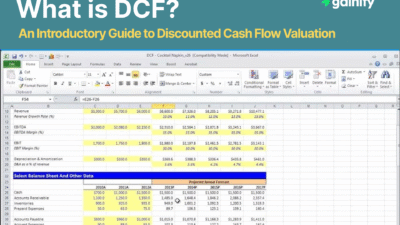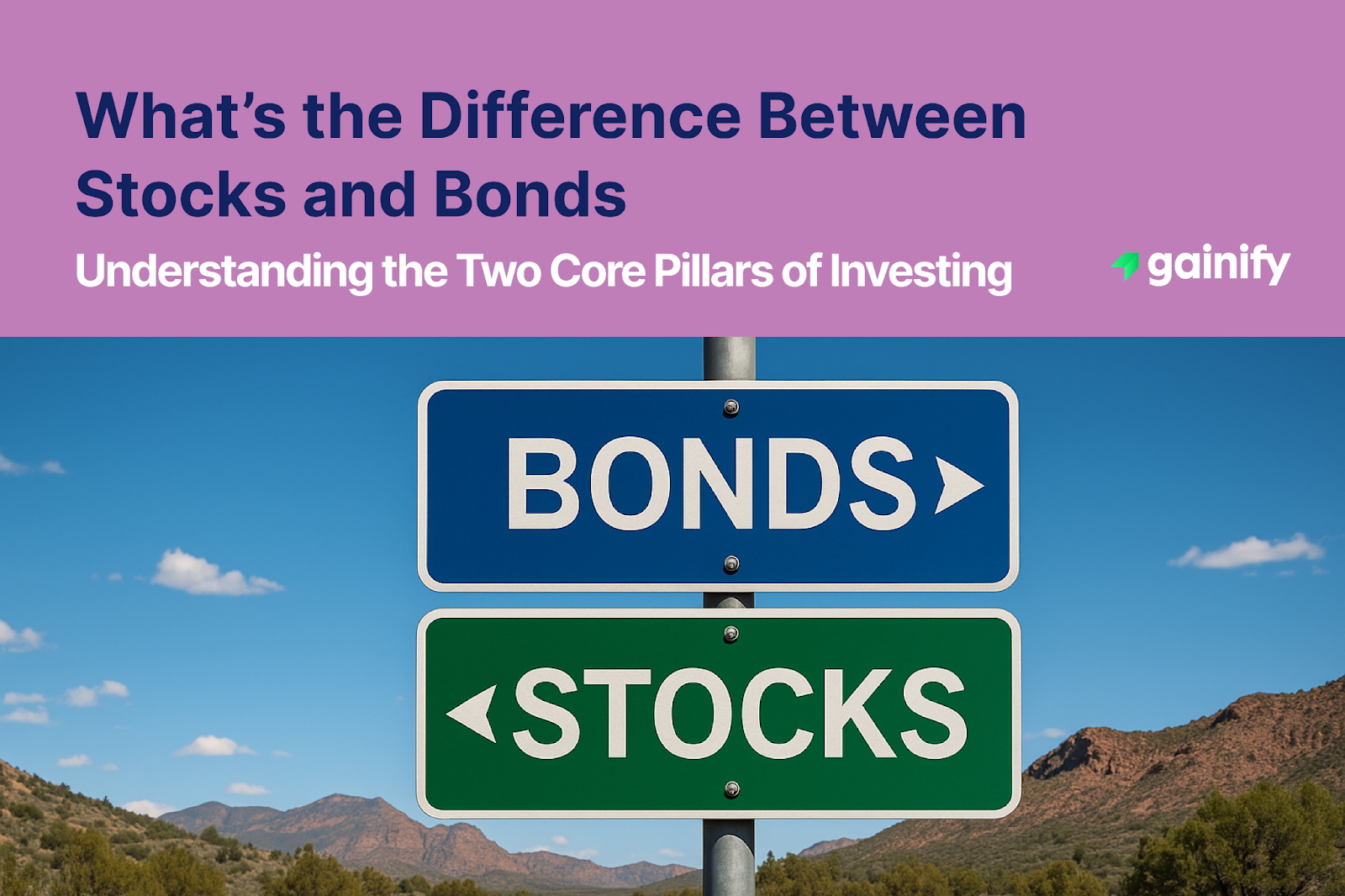When most people think about the stock market, they imagine adults in suits trading on Wall Street or watching the Dow Jones Industrial Average on CNBC. For a teenager, that world can feel intimidating, complex, and far away. But here’s the surprising truth: teenagers can start investing today, even with very little money.
What makes teenagers unique? Time. Time is the single most important ingredient in building wealth. With decades ahead, teenagers can use compound interest to their advantage. By starting early, you can develop financial habits that set you up for lifelong financial security.
Think of investing like planting a tree. The best time to plant was 20 years ago. The second best time is today. If you plant early, your tree grows taller and stronger. Investing in an investment account when you’re young is no different: the earlier you start, the more your money skills will grow.
“Someone is sitting in the shade today because someone planted a tree a long time ago.” – Warren Buffett
This guide is built for teenagers who want to:
- Understand the basics of stock investing and personal finance.
- Gain financial literacy by building a diversified investment portfolio.
- Learn the role of risk management in making investment choices.
- Explore investment opportunities like Exchange-Traded Funds (ETFs), index-based exchange-traded funds, and mutual funds.
- Avoid dangerous traps like meme stocks, pump and dump schemes, or risky penny stocks.
Why Start Investing Early as a Teenager?
The answer is simple: compound interest. Compounding is when your money earns returns, and then those returns begin to earn returns themselves. Over time, this snowball effect can turn small investments into massive wealth.
Consider the Rule of 72. A simple personal finance lesson that tells you how long it takes for your money to double. Divide 72 by your average annual return. For example, at 8% per year, your money doubles roughly every nine years.
- A $1,000 investment at 16 can grow to $2,000 by 25, $4,000 by 34, and so on.
- By the time you retire, that same $1,000 could be worth over $20,000 without adding another cent.
Now imagine if you invest $50 every month from a summer job or part-time gig. Over decades, this adds up to hundreds of thousands of dollars in wealth. Teenagers who embrace financial literacy and consistent investing create advantages most adults wish they had.
Step 1: Learn the Basics of Investing
Before jumping into online investing or signing up for online trading platforms, you need a foundation in personal finance. Here are the 10 essential concepts every new investor should understand:
Stocks → Ownership in companies. A single share represents a fraction of a business. Buying shares is called stock investing. Prices rise and fall depending on company performance and market conditions.
Bonds → Loans to companies or governments. You lend money and receive interest plus repayment later. Lower risk than stocks but usually lower returns.
Mutual Funds → Investment products that pool money from many investors to buy stocks, bonds, or other assets. Provide diversification but may charge management fees.
Exchange-Traded Funds (ETFs) → Similar to mutual funds but trade like individual stocks. Many are index-based exchange-traded funds that track market indexes such as the S&P 500 or the Dow Jones Industrial Average. Low cost and beginner-friendly.
Money Market Funds → Safer, lower-yield investment products that hold short-term debt securities. Useful for stability and short-term saving, not high growth.
Digital Assets → Cryptocurrencies and tokens. Part of the modern investment landscape but extremely volatile and risky. Vulnerable to scams like pump and dump schemes often promoted on social media.
Compound Interest → Earnings that generate more earnings. Over time, this creates exponential growth. The Rule of 72 is a quick way to estimate how long it takes money to double at a given rate of return.
Diversification → Spreading investments across multiple asset classes, such as stocks, bonds, ETFs, or real estate. Reduces risk by ensuring you’re not dependent on the success of a single investment choice.
Risk Tolerance → Your personal comfort level with investment risks. Knowing whether you can handle short-term losses helps you pick the right asset allocation and avoid panic selling when markets drop.
Financial Goals → Clear objectives for your investing, such as saving for college, building a retirement account, or achieving long-term financial security. Your investment goals shape your asset allocation and investment decisions.
✅ Learning these basics gives you the foundation to read account statements with confidence, understand investment recommendations, and avoid risky traps like penny stocks or meme stocks. With this knowledge, you can make smarter decisions in the investment landscape and develop money skills that last a lifetime.
Step 2: Where to Learn More About Investing
Learning the basic concepts is only the first step. To truly build confidence and develop strong money skills, you need to keep educating yourself. The best investors never stop learning. Fortunately, teenagers today have more access than ever to resources that make complex financial topics simple and practical.
Here are some of the best ways to continue building your financial literacy:
Books → Some of the greatest investors recommend starting with timeless books.
- The Little Book of Common Sense Investing by John C. Bogle → Explains why index-based exchange-traded funds are one of the most powerful investment products.
- The Intelligent Investor by Benjamin Graham → A classic on value investing and risk management.
- Rich Dad Poor Dad for Teens by Robert Kiyosaki → Personal finance lessons written in a teen-friendly way.
Reading regularly builds your foundation in personal finance and helps you understand investment risks, financial goals, and long-term wealth building.
Online Courses → There are free and paid courses that teach stock investing and the basics of the investment landscape.
- SEC’s Office of Investor Education and Advocacy → Offers free, trustworthy resources for new investors.
- Coursera & Udemy → Affordable courses covering everything from stock market basics to asset allocation.
- Fidelity, Vanguard, Charles Schwab → Their education centers often include free “stock investment courses” tailored for beginners.
Taking a structured course helps reinforce key concepts like compound interest, diversification, and risk tolerance.
Research Platforms → Modern platforms are built to make learning interactive.
- Gainify → A learning platform that blends personal finance lessons, quizzes, and simulations to help teens practice financial literacy in a hands-on way.
- TradingView → An online charting and analysis platform that lets you track stock market trends, study market indexes like the S&P 500 or Dow Jones Industrial Average, and practice reading charts. Even beginners can use it to understand how stock prices move over time.
- Investopedia → A reliable source to quickly look up definitions and real-world examples when you encounter new terms.
Platforms like these make learning active instead of passive. You’re not just reading, but you’re practicing and applying concepts.
✅ Key takeaway: The stock market can feel complicated, but you don’t have to figure it out alone. By combining books, structured courses, and interactive platforms like Gainify, you can steadily improve your financial literacy, strengthen your investment habits, and prepare yourself to make smarter investment choices in the real world.
Step 3: Choose the Right Type of Account
Teenagers cannot legally open a trading account completely on their own until age 18. This is because of legal and fiduciary responsibility: brokers need an adult who can be held accountable for managing the account properly. But with a parent or guardian’s help, there are excellent paths to get started early.
Here are the main options:
Custodial Brokerage Account (UGMA/UTMA)
A custodial brokerage account is opened in a teenager’s name but managed by an adult (the “custodian”). The two main types are UGMA (Uniform Gifts to Minors Act) and UTMA (Uniform Transfers to Minors Act).
- What you can do: Buy and sell stocks, ETFs, mutual funds, and other common investment products.
- Who manages it: The parent or guardian makes the investment decisions until the teen reaches the age of majority (18 or 21 depending on the state).
- When you gain control: At that age, the account legally transfers to you, and you take full ownership of the assets.
- Extra features: Some firms, like Fidelity, offer teen-friendly accounts such as the Fidelity Youth Account. These often come with high security standards, educational tools, and protections like the Fidelity Customer Protection Guarantee to safeguard your money.
✅ Why it matters: Custodial accounts are great for teens who want hands-on investing experience before turning 18, with parental oversight to guide them.
Custodial Roth IRA
A custodial Roth IRA is one of the most powerful tools a teenager can use to start building long-term wealth. It is a retirement account that offers unique tax benefits.
- Eligibility: You must have earned income. That means money from a summer job, babysitting, tutoring, mowing lawns, or any other work where you get paid. Allowance or gifts do not count.
- How it works: Contributions are made with after-tax dollars. The money then grows tax-free, and withdrawals in retirement are also tax-free.
- Contribution limit: For 2025, the maximum is $7,000 or your total earned income for the year, whichever is less.
- Why it’s powerful: Because you’re starting so young, your money has decades to benefit from compound interest inside a tax-free account. Even small contributions can turn into huge sums over time.
✅ Example: If you invest $1,000 in a custodial Roth IRA at age 16 and it grows at 7% annually, by the time you’re 65 it could be worth over $30,000 and you won’t owe a penny in federal income taxes when you withdraw it.
Standard Brokerage Account (18+)
Once you turn 18, you can open your own standard brokerage account without needing a parent or guardian.
- Where to open: Popular options include Fidelity, Vanguard, Charles Schwab, Interactive Brokers, and other online trading platforms.
- What you can invest in: Individual stocks, ETFs, mutual funds, bonds, and in some cases even alternative investment products.
- What to watch: At this stage, you’re fully responsible for your account activity, investment risks, and tax consequences such as capital gains.
✅ Why it matters: This is your first true independent step into the world of online investing, where you are fully in charge of your financial goals and investment decisions.
Step 4: Fund Your Account
You don’t need to be rich to start. Thanks to fractional share investing, you can buy a small piece of expensive stocks like Amazon or Tesla with $10 or $20. This makes stock investing more accessible than ever.
Funding strategies for teens:
- Use money from a part-time or summer job.
- Save birthday or holiday gifts.
- Set aside small amounts weekly and transfer them into your investment account.
If you’re not ready to invest yet, build savings in high-yield savings accounts while you learn. Once you’re comfortable, transition that money into diversified investment products.
Step 5: Decide What to Invest In
Once you understand the basics and have opened your investment account, the next big question is: what should I actually buy?
The truth is, there are thousands of investment products out there, and the options can feel overwhelming. But for beginners — especially teenagers — the smartest move is to keep things simple, diversified, and low cost.
Here are the most useful investment choices to consider, plus what to avoid:
Index-Based Exchange-Traded Funds (ETFs)
- What they are: ETFs are baskets of many different stocks bundled into one investment. Index-based exchange-traded funds track market indexes like the S&P 500 or the Dow Jones Industrial Average.
- Why they’re great for teens: Instead of picking one stock, you instantly own a slice of hundreds of companies. This creates diversification, which lowers risk. They’re also very low cost.
- Example: An S&P 500 ETF means you own shares in companies like Apple, Microsoft, and Amazon all at once. If one company struggles, others in the index help balance it out.
- Tip: Start with a broad-market ETF to learn how the stock market behaves without betting on a single company.
Mutual Funds
- What they are: Like ETFs, mutual funds hold many stocks and/or bonds. The key difference is how they are managed. Some are actively managed (with higher fees) and some are passive (lower cost, index-based).
- Why they’re useful: For beginners, index-based mutual funds are simple “set it and forget it” investments.
- Example: A total stock market mutual fund gives you exposure to almost every U.S. company, large and small.
- Tip: Always check the fund’s expense ratio (fee). Over time, high fees eat into your returns.
Individual Stocks
- What they are: Shares of specific companies, like Apple ($AAPL), Nike ($NKE), or Tesla ($TSLA).
- Why they’re appealing: You may already know and love these companies, which makes stock investing exciting.
- The risk: Individual stocks are volatile. If the company struggles, your investment could lose value quickly.
- Best approach: Keep individual stocks as a small piece (maybe 10–20%) of your diversified investment portfolio, and use ETFs for the bulk of your money.
- Tip: Always research before buying. Read the company’s annual report, check recent news, and ask: how does this business actually make money?
Alternative Investments
- Real Estate: Teens can’t usually buy property, but you can invest through REITs (Real Estate Investment Trusts). These are companies that own and manage real estate, and they trade like stocks.
- Digital Assets: Cryptocurrencies like Bitcoin or Ethereum are part of today’s investment landscape. They can deliver high returns, but they’re extremely volatile and risky.
- Why be cautious: Both REITs and crypto require strong risk management. They should never be your main investment choices, only small experiments after you’ve built a solid foundation.
What to Avoid: Penny Stocks and Meme Stocks
- Penny stocks: Ultra-cheap stocks (usually under $5) that often belong to small, unproven companies. They are heavily speculative.
- Meme stocks: Stocks that explode in popularity because of hype on social media (think GameStop or AMC). They can skyrocket and crash just as quickly.
- The danger: Many of these are tied to pump and dump schemes, where early promoters profit and latecomers lose money.
- Tip: If something looks “too good to be true” in the stock market, it usually is. Stick to proven investment products instead.
How to Decide as a Teenager
When you’re just starting, here’s a simple roadmap for your asset allocation:
- 70–80% → Broad index ETFs or index-based mutual funds (foundation of your portfolio).
- 10–20% → Individual stocks you research and admire (for learning).
- Up to 10% → Alternative investments like REITs or digital assets (if you want to experiment carefully).
The key is to match your investments with your financial goals and risk tolerance. If your goal is long-term growth (like funding a retirement account), focus heavily on diversified funds. If your goal is learning, experiment with a small stock position while keeping most of your money safe in low-cost funds.
Step 6: Build Consistent Habits
Successful investing is not about timing the market or getting lucky with the next “hot stock.” It is about discipline, consistency, and long-term thinking. Even the best financial advisors agree: the investors who stick to a plan almost always outperform those who jump in and out chasing short-term gains.
Here are practical ways teenagers can build wealth-building habits:
- Automate your investing → Set up automatic transfers from your checking account (or high-yield savings account) into your investment account every week or month. Automation makes investing effortless and removes the temptation to spend money instead of investing it.
- Start small but stay regular → Even $10–$20 invested weekly adds up. Thanks to fractional share investing, you don’t need large amounts to buy into companies or ETFs. Over time, these small steps harness the power of compound interest.
- Track your progress with account statements → Don’t just check your balance daily. Instead, review monthly or quarterly account statements and compare how your investments are doing relative to your financial goals. This develops good financial literacy and helps you focus on long-term growth.
- Ignore the daily noise → The stock market rises and falls every day because of short-term market conditions. Headlines, social media posts, or sudden news stories can make you anxious. But history shows that long-term investors who stay consistent through ups and downs usually come out ahead.
✅ Key lesson: Consistency builds wealth. A small amount invested regularly for years is far more powerful than waiting for the “perfect” time to invest. The habit is more important than the amount.
Step 7: Avoid Common Mistakes
Even smart teenagers with good financial habits can fall into traps if they are not careful. Some mistakes are so common that almost every beginner makes them. The good news is that you can avoid them if you know what to look out for.
Here are the biggest ones:
- Following unreliable investment recommendations on social media → Just because someone on TikTok or Reddit says a stock will “go to the moon” doesn’t mean it’s a smart choice. Many of these posts are part of hype cycles or pump and dump schemes where someone profits while others lose. Always do your own research.
- Buying into meme stocks without understanding risks → Meme stocks may rise quickly but are extremely volatile. They often crash just as fast as they climb. Beginners who buy late in the cycle can lose most of their money. Stick to diversified investment products like ETFs or mutual funds.
- Ignoring debt management while investing → If you have high-interest debt (like credit card debt later in life), paying it down should come before investing heavily. Why? Because if you owe 20% interest on debt, no investment can reliably beat that rate. Learning debt management early is as important as learning stock investing.
- Day trading without understanding fiduciary responsibility and taxes → Many teens are tempted by online trading platforms that make buying and selling look like a game. But frequent trading comes with two big risks:
- Losing money quickly because of market volatility.
- Owing taxes on capital gains if you sell investments at a profit. Even small wins can add up to an unexpected tax bill.
The Office of Investor Education and Advocacy warns young investors to be skeptical of hot stock tips and to prioritize financial literacy. Smart investors focus on long-term financial goals and risk management, not quick wins.
✅ Key lesson: Avoid shortcuts. Most “get rich quick” ideas in the stock market fail. Focus on building financial literacy, developing money skills, and sticking with proven strategies instead of chasing hype.
Example: Two Teenagers, Two Outcomes
Let’s compare Alex and Jordan. Both invest the same amount each month: $50. The only difference is when they start.
- Alex starts investing at age 16, contributing $50 per month for 10 years. By age 26, Alex stops investing completely.
- Total invested: $6,000
- Total invested: $6,000
- Jordan waits until age 26 to begin. Jordan invests $50 per month until age 65 — nearly 40 years of investing.
- Total invested: $23,400
Now let’s assume both earn an average 7% annual return (the long-term stock market average).
- By age 65, Alex’s account grows to about $113,000 — even though Alex stopped contributing after age 26.
- By age 65, Jordan’s account grows to about $106,000 — despite investing almost four times as much.
✅ Lesson: This example shows why starting early is so powerful. Time in the market matters more than how much you invest. By investing young, you let compound growth become your biggest ally.
Frequently Asked Questions
Can I invest if I don’t have a job?
Yes. A parent can open a custodial brokerage account, and you can fund it with gifts or savings.
What if I do have a job?
You can open a custodial Roth IRA. Contributions grow tax-free and withdrawals in retirement are tax-free. Some employers even offer matching contributions, which supercharge your retirement savings.
What is the minimum amount?
Thanks to fractional share investing, you can start with $10.
What should I avoid?
Stay away from penny stocks, pump and dump schemes, and risky digital assets until you fully understand the investment landscape.
Final Thoughts
Starting to invest as a teenager is one of the smartest financial decisions you can make. By opening the right type of investment account, learning the basics of stock investing and ETFs, and setting clear investment goals, you can build financial security that will last a lifetime.
The keys are simple:
- Develop strong money skills and personal finance habits.
- Invest consistently in diversified investment products.
- Manage your risk tolerance carefully.
- Keep improving your financial literacy through personal finance lessons, reading account statements, and staying aware of market conditions.
“The best time to start was yesterday. The next best time is today.”
With the right strategy, teens can avoid mistakes, embrace long-term financial planning, and create wealth that grows well beyond their lifetimes.




